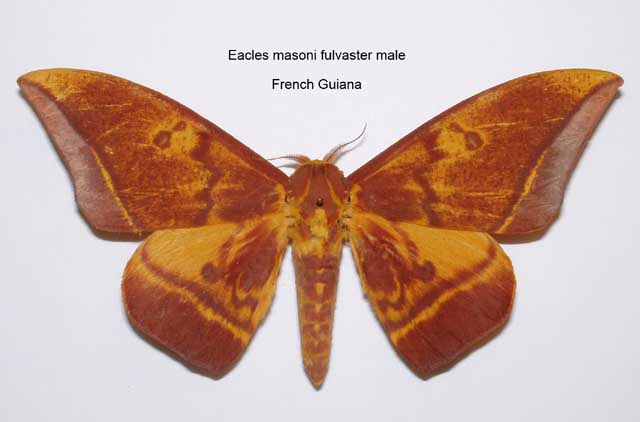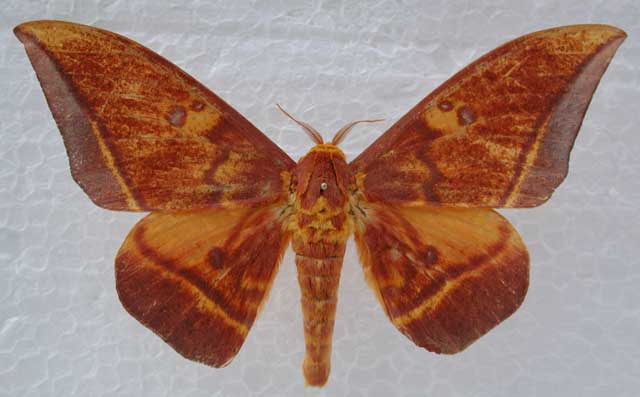Semi-translucent green eggs,
girdled with a black band, are deposited singly or in small clusters of up to six.
The larvae become visible through the egg shells a day or so before emerging.
Larvae are solitary in their feeding habits. At maturity larvae
descend trees to pupate in underground chambers. Pupae should be
stored under cool, but above freezing temperatures, and sprinkling
with water a few times a week in June encourages July-August
eclosions. There is another brood typically on the wing in January.
Larval Food Plants
It is hoped that this alphabetical listing followed by the common
name of the foodplant will prove useful. The list is not exhaustive.
Experimenting with closely related foodplants is worthwhile.
Liquidambar
Quercus
Prunus domestica .......
|
Sweetgum
Oak
Plum
|
Use your browser "Back" button to return to the previous page.
Return to Eacles Index
Goto South American Saturniidae Directory
Goto Main Saturniidae Index
The pronunciation of scientific names is
troublesome for many. The "suggestion" at the top of the page is
merely a suggestion. It is based on commonly
accepted English pronunciation of Greek names and/or some
fairly well accepted "rules" for latinized scientific names.
The suggested pronunciations, on this page and on other pages,
are primarily put forward to assist those who hear with internal
ears as they read.
There are many collectors from different countries whose
intonations and accents would be different.
Some of the early describers/namers chose genus
and species names indicating some character of the insect, but more
often, they simply chose names from Greek or Roman mythology or
history.Those species names which end in "ensis" indicate a
specimen locale, and those which end in "i", pronounced "eye", honour
a contempory friend/collector/etc.
I do not know the source of the genus
name "Eacles", but it may be a combination of
"Ea", the Greek word for gods and goddesses and the Greek
suffix "cles", meaning 'glory of'.
The species name "silkae" is honorific for Silke van Schayck.
| 


